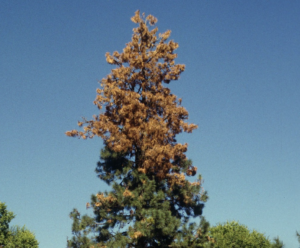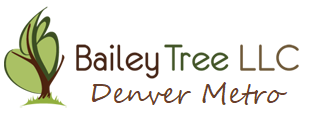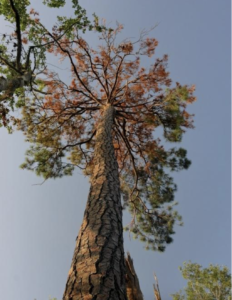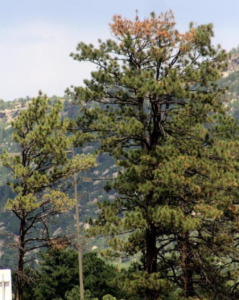Pine Beetle And Spruce Beetle Treatment
There are 11 species of engraving beetles that call Colorado home. They are all native beetles that attack pines, spruce, and fir trees along the Front Range and in our Mountains. Some are host specific to the tree and others are not as host selective.
Have you noticed a number of dead pines, spruce, and fir as you travel throughout in the mountains? These deaths are due to number of beetles (along with forest fires and windfalls) causing tree death. Pine bark beetles are relatives of the IPS engraver beetle. IPS beetles attack trees in the Denver Metro area, while there have been a few cases of Pine beetle here, they are rare.
 Trees that are attacked are often those under stress due to drought, heat, salt damage and transplant injury. They can attack any wood that is 1” in diameter and larger. Some signs/symptoms include:
Trees that are attacked are often those under stress due to drought, heat, salt damage and transplant injury. They can attack any wood that is 1” in diameter and larger. Some signs/symptoms include:
- Pitch tubes.
- Bird damage (holes)
- “Hits”-unsuccessful (small holes) insect attacks
- Tunneling from larvae on trees once bark has been removed.
- On pines the brown needles will persist, while on spruce the tree will shed its needles while still in full healthy color.
The death of the tree is two-fold. Blue stain, which has become a highly prized wood in recent years, also has several different strains throughout the state. It derives its name from the various colors it changes the interior tissue wood to. However, this fungus actually is carried on the mouthpart of the beetle and infects the tree, gumming up the vascular tissue that is vital to the transport of water and nutrients within the tree. The result is dieback.
This is not to be confused with Pine Wilt Nematode. We have a few treatment options for the management of this destructive insect in our tool bag.
Photo credit for this page:
USDA Forest Service - Coeur d’Alene Field Office , Bugwood.org
Whitney Cranshaw, Colorado State University, Bugwood.org


